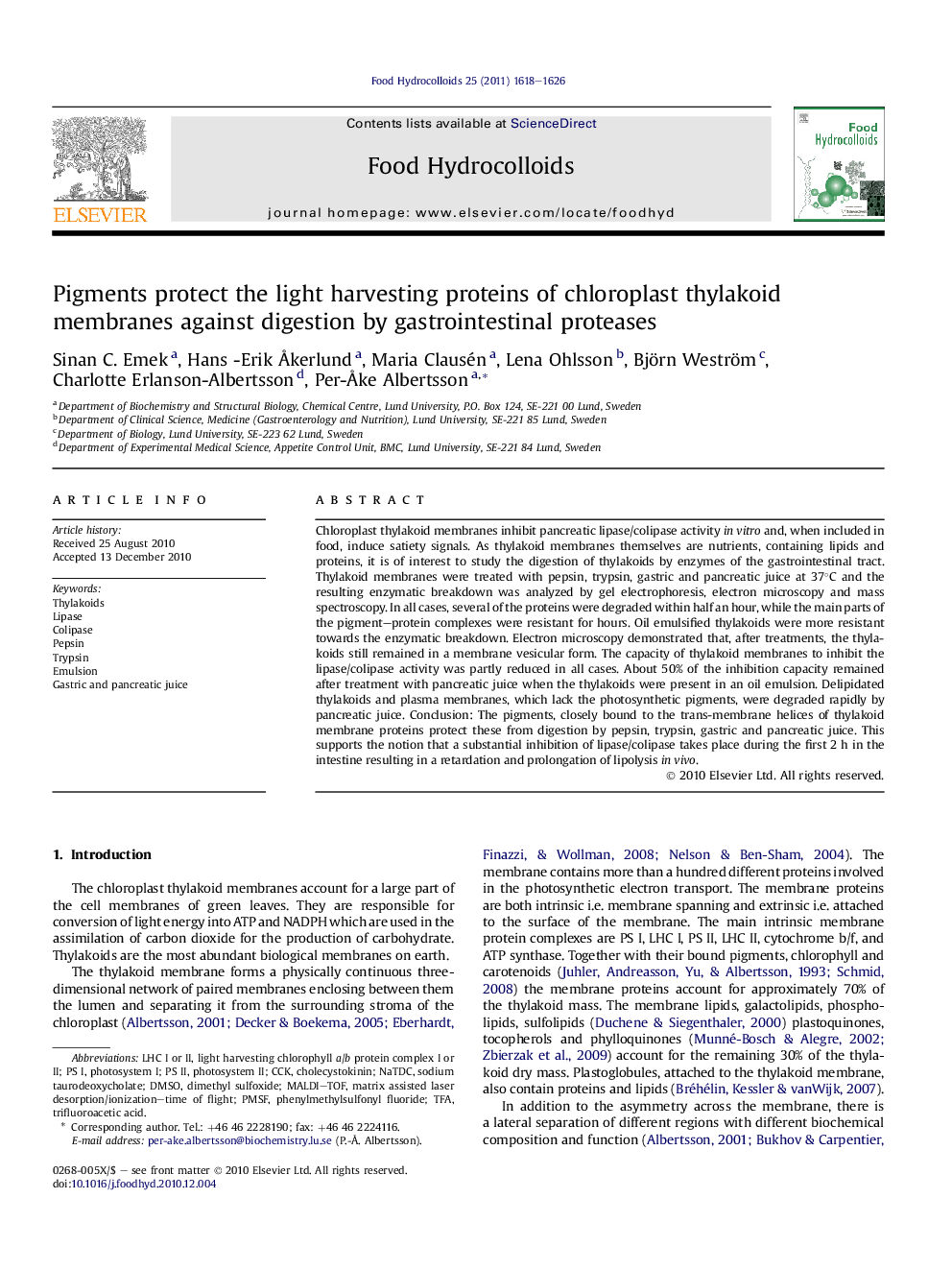| Article ID | Journal | Published Year | Pages | File Type |
|---|---|---|---|---|
| 604563 | Food Hydrocolloids | 2011 | 9 Pages |
Chloroplast thylakoid membranes inhibit pancreatic lipase/colipase activity in vitro and, when included in food, induce satiety signals. As thylakoid membranes themselves are nutrients, containing lipids and proteins, it is of interest to study the digestion of thylakoids by enzymes of the gastrointestinal tract. Thylakoid membranes were treated with pepsin, trypsin, gastric and pancreatic juice at 37°C and the resulting enzymatic breakdown was analyzed by gel electrophoresis, electron microscopy and mass spectroscopy. In all cases, several of the proteins were degraded within half an hour, while the main parts of the pigment–protein complexes were resistant for hours. Oil emulsified thylakoids were more resistant towards the enzymatic breakdown. Electron microscopy demonstrated that, after treatments, the thylakoids still remained in a membrane vesicular form. The capacity of thylakoid membranes to inhibit the lipase/colipase activity was partly reduced in all cases. About 50% of the inhibition capacity remained after treatment with pancreatic juice when the thylakoids were present in an oil emulsion. Delipidated thylakoids and plasma membranes, which lack the photosynthetic pigments, were degraded rapidly by pancreatic juice. Conclusion: The pigments, closely bound to the trans-membrane helices of thylakoid membrane proteins protect these from digestion by pepsin, trypsin, gastric and pancreatic juice. This supports the notion that a substantial inhibition of lipase/colipase takes place during the first 2 h in the intestine resulting in a retardation and prolongation of lipolysis in vivo.
Graphical abstractFigure optionsDownload full-size imageDownload as PowerPoint slide
